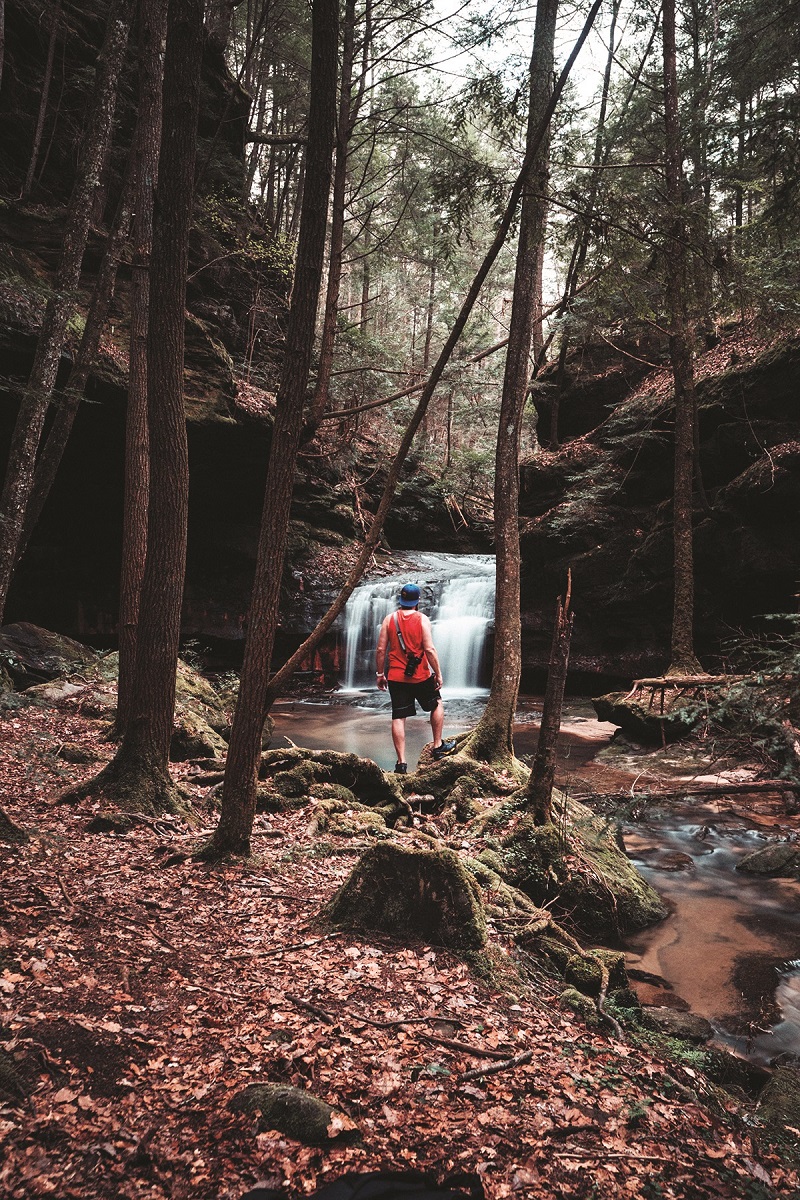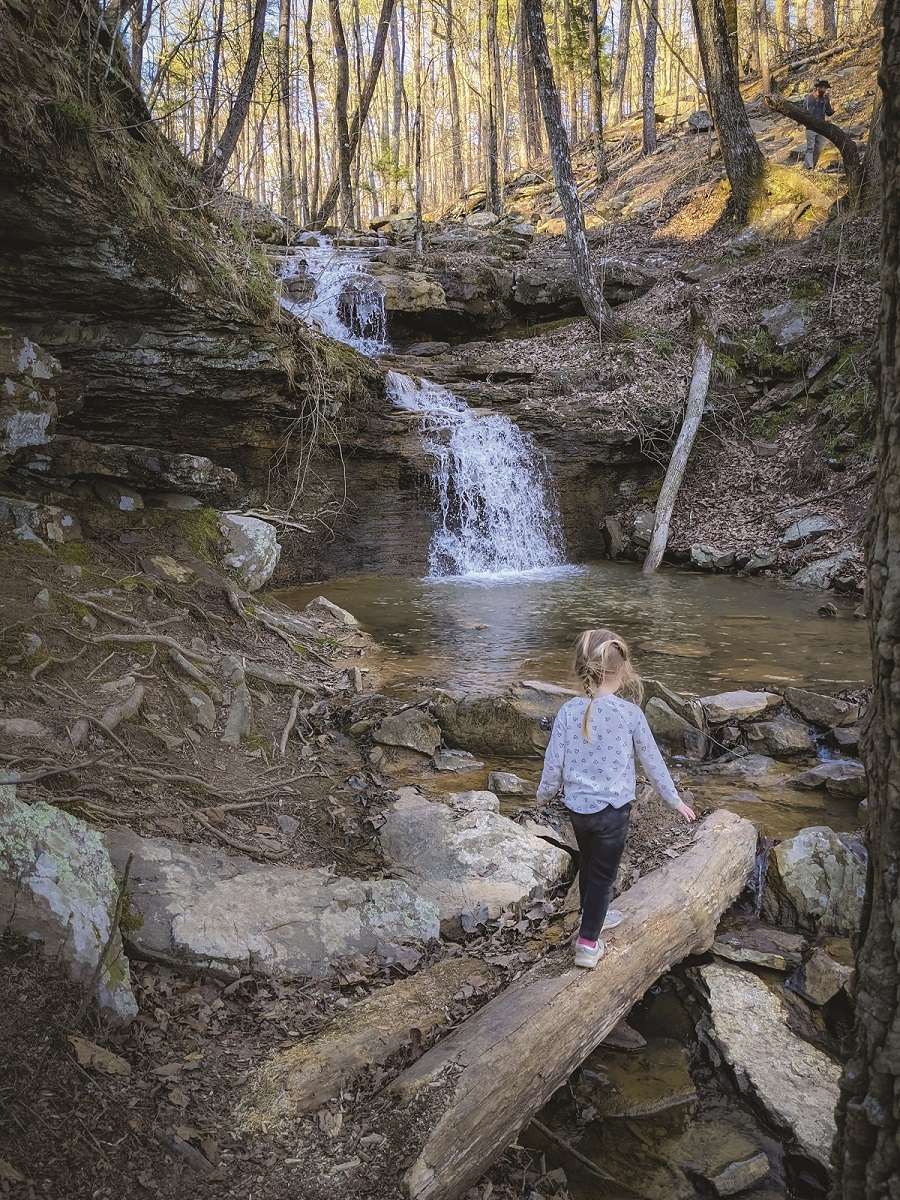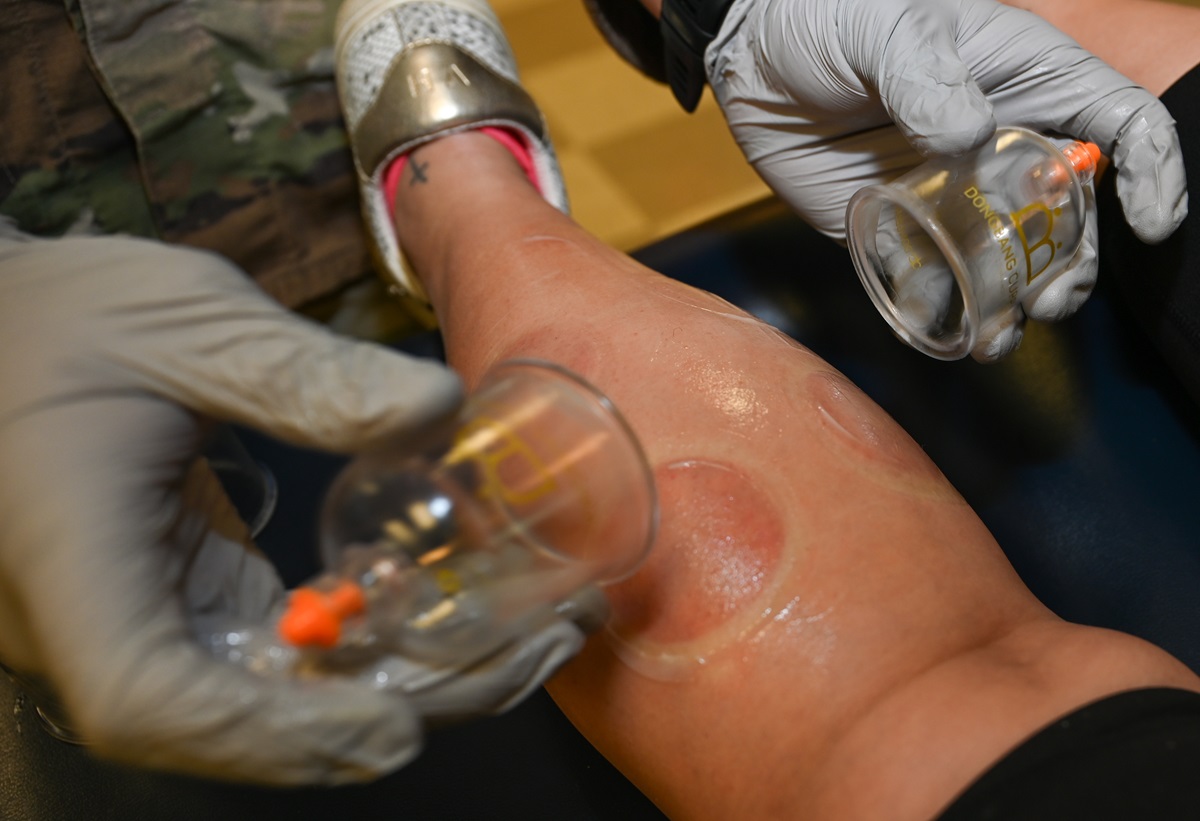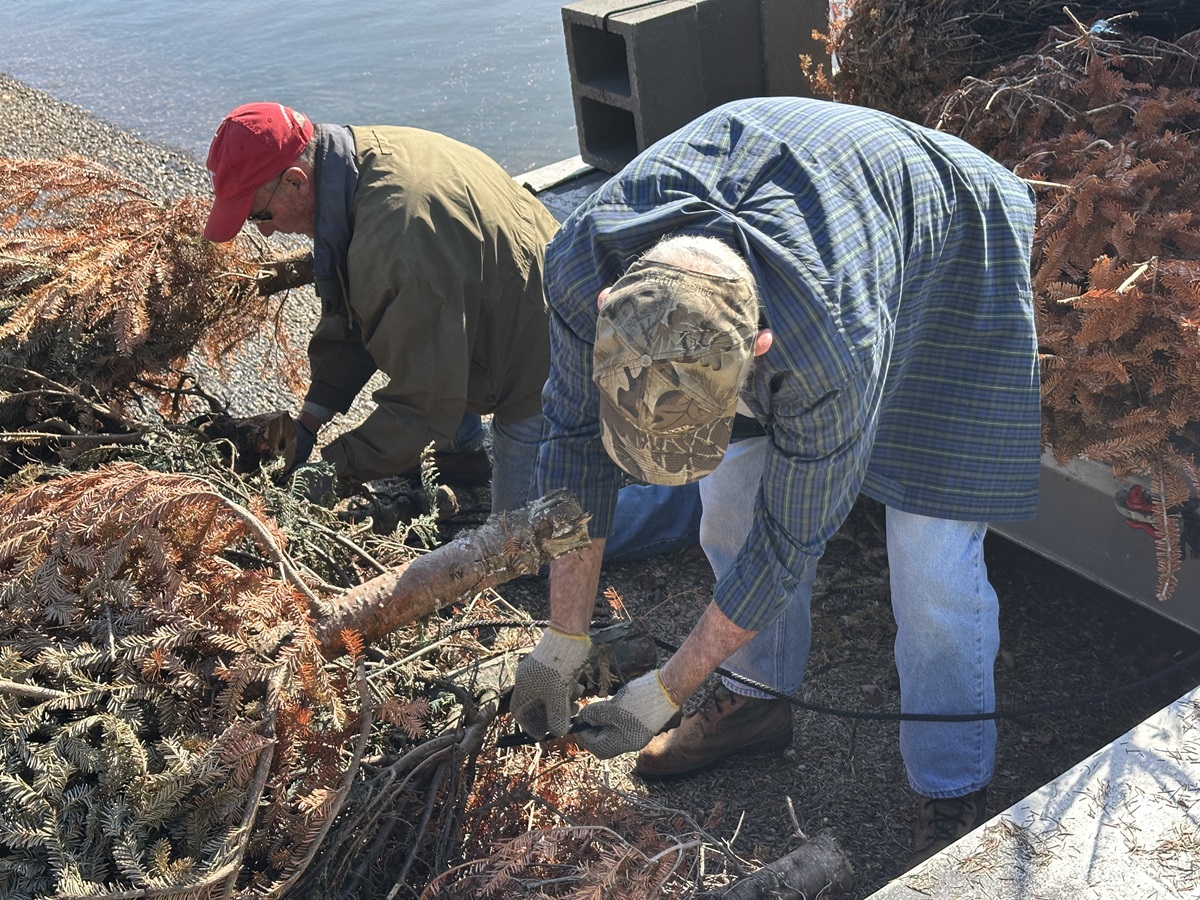Alabama’s multiuse trails lure cyclists, runners for health, recreation and the outdoors

This photo shows land that will be a part of the proposed Singing River Trail, a 140-mile hiking, biking and birding trail that will link eight north Alabama counties. (John Kvach)
Two or three times a week, John Cassell straps on a helmet, jumps on his bike and cycles 10-15 miles on the Chief Ladiga Trail that runs near his home in Jacksonville. “I do it for recreation, relaxation and fellowship,” the retiree said.
Retiree Bo Batey walks the trail for health reasons. But the asphalt trail, with woods, farmland, creeks, birds, rabbits, deer and the occasional coyote, also relaxes him. “It’s refreshing to walk,” he said of the 33-mile trail that starts in Weaver and runs through Jacksonville and Piedmont before reaching the Georgia state line.
In the past year, Cassell has observed more people on the trail. He thinks it’s because of the pandemic: “People are so tired of staying inside.”
They have a lot of company. Alabamians are taking to trails, and more trails are popping up in urban and rural areas to accommodate the people. In 2020, Alabama’s state parks saw an increase in visitors of more than 1.5 million – or about 32% – and it’s a good bet many of those visitors were using the park system’s 250 miles of trails to walk, run or cycle.

A walker enjoys the view of a waterfall in Bankhead National Forest. (Evan Lanier)
John Kvach, executive director of the Singing River Trail in north Alabama, believes the premium on alternative forms of recreation will increase support for the projected 140-mile hiking, biking and birding trail, stretching from South Pittsburg, Tennessee, to Muscle Shoals, Alabama, that will link Jackson, Madison, Marshall, Morgan, Limestone, Lawrence, Colbert and Lauderdale counties.
“With COVID-19, people look at the outdoors differently,” he said. “That’s what I’m trying to tap into.”
Paved in urban and suburban areas, the proposed trail will be composed of hard-packed gravel in rural areas. “We’re hoping we can make it as natural a part of the landscape as possible,” Kvach said. While the trail will include a cross-section of north Alabama’s terrain as it traverses the state, he plans to minimize its uphill grade. “I want it to be a universal trail,” he said, “and open to people of all abilities.”
Carolyn Buck, director of the Red Rock Trail System of 125 miles of walking trails, bike lanes and parks in Jefferson County, agrees that the pandemic increased the use of the trails. “Anecdotally, we’ve seen a huge jump in numbers since COVID-19. People are looking for places to get outside.”
The leafy, 3-mile High Ore Line Trail in Midfield, a suburb of Birmingham, offers just such a spot. Allowing walkers to access nature in a way they normally couldn’t in an urban area, the trail crosses over picturesque Valley Creek on its way to Red Mountain Park, which includes another 15 miles of trail.
The Chief Ladiga, High Ore Line and proposed Singing River trails are part of a nationwide movement to create more greenways – multiuse trails for nonmotorized recreational use or transportation.
“They’re linear parks,” said Will O’Connor, executive director of River Region Trails in Montgomery. “Long, skinny parks with trails in them that are designed to connect places people want to go.” Supported by public and private money, the aim is to encourage Alabamians to get outside to experience the benefits of exercise and nature.
The Jefferson County Department of Health is one of the Red Rock Trail System’s greatest supporters, Buck said. The High Ore Line Trail is attached to one of the county’s health clinics so that patients will be more likely to use it. The UAB Minority Health & Health Disparities Research Center encourages trail use by having doctors write prescriptions for exercise. “They found that people are more likely to exercise if they think it’s a medical recommendation,” Buck said.
The Rails to Trails Conservancy movement contributes to this campaign. It’s a push to repurpose abandoned railroad lines into recreational and nature trails. The High Ore Line Trail, for example, was built on an old railway used by Birmingham’s mining industry. In the late 1990s, the city of Jacksonville acquired 8.2 miles of the Norfolk Railroad bed that became part of the Chief Ladiga Trail. One advantage of former railways is that the uphill grade is limited, opening the trails, like the Singing River Trail, to a range of users.
Improving community health
Mayor Johnny Smith believes the trail has improved Jacksonville’s quality of life. “I’m convinced it’s improving the health of our community because I see people I know out there, and I’m pretty certain they wouldn’t be out getting that exercise without having the trail right here,” Smith said.

A young walker along the Alum Hollow Trail in Green Mountain Nature Preserve near Huntsville, part of the Land Trust of North Alabama. (David Parham)
River Region Trails has acquired several abandoned rail corridors in Montgomery. O’Connor said that one of its first projects is building a trail from downtown Montgomery to Cypress Park, 260 undeveloped acres 1.2 miles from downtown. The park “has a fantastic diversity of plants and wildlife,” O’Connor said. “The park has the potential to serve as a mini-Central Park for Montgomery.”
Recreational trails appeal not only in Alabama’s metropolitan areas but in its countryside, too. Buck said that especially in rural areas of Jefferson County, she’s seen a push from communities “trying to redefine themselves … (and) really investing in green spaces.”
Brian Rushing, director of economic development Initiatives at the University of Alabama’s Center for Economic Development, agrees that multiuse trails often produce economic benefits because rural parts of Alabama offer natural resources that can be developed for tourism. “Alabama is one of the most biologically diverse states in the lower 48,” Rushing said. “We’ve got a lot of really good opportunities to develop outdoor recreations in our rural communities.”
Rushing said studies of the Chief Ladiga Trail suggest it attracts at least 100,000 visitors a year, resulting in an estimated $1.5 million of direct annual economic impact.
O’Connor hopes that one day the trail system will link the urban and rural regions of the state so that the trails will not only bring economic benefits by bringing people into rural areas, but help unify town and country. “There is evidence that trails help the social fabric of a community because we start to see each other as humans in a different way,” he said. “That has been an unexpected benefit of trails.”
More projects are in the works. The Red Rock Trail System expects to expand to 750 miles throughout Jefferson County. The cities of Andalusia and Opp are heading a plan to acquire a rail corridor between Andalusia and Geneva to create a 44-mile rail trail through the Wiregrass Region, which would be the longest in the state.
For more information on the Rails to Trails conservancy and a listing of rails to trails in Alabama, visit traillink.com/state/al-trails/.
Prepare before you walk or cycle
Before setting out to walk or cycle one of Alabama’s many trails, be prepared.
- Longer trails have – or will have – places along the trail to pick up water, but it’s always smart to bring water.
- Hiking or biking with a buddy is encouraged.
- If you’re alone on a trail, the biggest risk is a medical emergency. Take a cellphone and a trail whistle.
- Before you leave, tell someone where you’re going and when you’ll return.
This story originally appeared in Alabama Living magazine.





